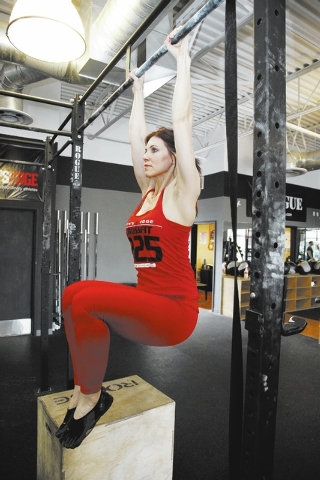To boost your core, get the hang of these exercises
Believe it or not, some people actually use their abs as a lure to the opposite sex. Worse yet, some think that if they never achieve six-pack definition, they are lacking a crucial element to hooking the right fish in the ocean of compatible mates.
In my columns about the core I try to change the way people see their core. I don’t want you to think of your entire core as just the superficial six-pack and to benchmark your fitness level based on whether you have them.
Abdominals are part of your core. Your entire core supports your every movement. The better your movements are, the more conditioned your core will be. This is why I advocate functional movements such as squats, dead lifts and presses. These movements give strength to your entire core.
If you are looking for that supershredded definition, then start looking at the dinner table. That may not be the answer you are looking for but it is the truth. I have been doing this fitness thing long enough to know that healthy foods at healthy intake levels will make healthy bodies, defined abs and all.
Besides the main functional movements, I like to throw in some accessory core exercises to give the core a little extra stimulus. The core stabilizes and loves to do it. The best exercises for transferring to movements are those that make the core stabilize.
Today’s exercises come out of gymnastics. Upon first glance at the pictures in today’s paper, the exercises look simple. I assure you there is more going on than what the pictures portray. Every muscle in Laura Salcedo’s body is centered around her spinal positioning.
Take the hanging hollow body. Laura is not merely hanging from a bar until her grip gives out. Her upper back is contracted as part of keeping her shoulder blades locked tight around her spine. And that her elbows are pointing forward to put her arm in an externally rotated position. This puts her shoulder joint in a safe position to handle the load of her body.
Notice that her rib cage isn’t sticking out; it’s pulled down toward her hip bone. This keeps her back flat and out of lumbar extension. The lower half of her body is supported by the overlapping of her activated core musculature. If her core was not active you would see her lumbar overextended as her lower half hangs from the connective tissue around her spine. It doesn’t sound too comfy, does it?
Finally, Laura’s legs are not dangling or bent at the knees. They are straight and pointed slightly forward. This recruits the rest of the muscles in the front of her body and involves the posterior chain in stabilization.
I don’t want you to think that you need to be a rigid and overtight ball of muscle to accomplish this exercise. Just the contrary. All I’m looking for is enough muscle activation to hold your body from a bar for a few seconds. If all you can muster is 5 seconds, that is fine. Next week, try for 8 or 10 seconds. Work up to a minute hold or three sets of 20 seconds.
You will get good at this fast. If you find that your grip is a problem, address it. If you slip then use some chalk. There are powder and liquid kinds of chalk that fit easily into gym bags.
Sometimes the hands just can’t hold on because the forearms burn out too fast; you feel your hands and forearms aching long before your core ever fatigues. Try stretching the flexors and extensors of the forearms. Sporting goods stores also sell a variety of grip accessories: everything from quick-release wraps to hooks on wrist wraps. Try a few and see which works best for you.
The tuck version is a little more complicated. Sure, it is just raising the knees above the hip but it forces the abdominals, hip flexors and quads to work more. If you’re chronically tight in these areas, be sure to stretch and/or foam roll to combat the added tension of this exercise.
Chris Huth is a Las Vegas trainer. He can be reached at 702trainer@gmail.com. Consult your physician before beginning any exercise program.






















